Course encourages students to look at art through the lens of science and quantitative reasoning
An interdisciplinary course combining art, archaeology, and physics encourages students to look at cultural heritage objects through the lens of science and quantitative reasoning. The instructors hope to inspire careers in art conservation and archaeological science.
Even with its wealth of art and art museums, the Bay Area has few scientists whose work focuses on cultural heritage and art conservation. In response to this shortage, years ago, a group of people from the Fine Arts Museums of San Francisco and the Cantor Arts Center at Stanford University formed the Bay Area Conservation Science Initiative. The hope was that they could forge stronger bonds between art institutions and scientific research institutions and that, together, they could enhance art conservation in the region.

Victoria Hill, a senior majoring in art history, examining a miniature Mesoamerican vessel from the Stanford University Archaeology Collections that features Maya blue pigment. (Image credit: Andrew Brodhead)
Not long after its inception, Hideo Mabuchi, professor of applied physics at Stanford in the School of Humanities and Sciences and a professional ceramicist, was inspired by this group to offer a related course, developed with the Fine Arts Museums of San Francisco (FAMSF) and the Stanford Nano Shared Facilities (SNSF). That course, called Physical Analysis of Artworks, features lectures from art conservators from museums around San Francisco – and beyond – to introduce students to the profession. Throughout the quarter, students are trained to use advanced scientific equipment at SNSF to answer questions, in scientific fashion, about real works of art.
In addition to giving students some insight into a possible future in conservation, Mabuchi hopes the course can get at “the essential content of the physical sciences” – such as the scientific method, experimental design, and data analysis – and highlight their relevance to the interests of students who aren’t planning to become professional scientists.
Mabuchi thinks these skills and concepts might also aid aspiring student artists. “It’s hard to say anything new in science unless you notice something new – and so the ability to notice when something is curious is a fundamental skill in the sciences,” he said. “But in my work in ceramics, I feel like noticing things is often the start of new ideas, too.”
Indeed, art conservation is inherently interdisciplinary, said Jane Williams, a conservator with FAMSF, who guest lectures in the course. “This course has been a wonderful opportunity for us to engage students in thinking about how science and art can inform each other,” she added.
Mummies and Mayan blue
The focus of the course this year was blue and green pigments, such as Mayan blue and Egyptian blue. Thanks to the Stanford University Archaeology Collections (SUAC), part of the Stanford Archaeology Center, students had up-close access to artifacts, including an Egyptian mummy case and miniature Aztec pottery vessels that featured these, and other, pigments. Many details about these art materials, such as what the pigments signify and how they were made, are unknown – exactly the kind of mysteries that captivate art conservators.
The course also includes a field trip to the De Young Museum in San Francisco, which features behind-the-scenes tours of the conservation labs. “It blew my mind because I have been going to these museums my entire life, but never knew that there’s this whole world in the back,” said Regina Kong, an undergraduate in comparative literature and art practice, who took the course in 2020.
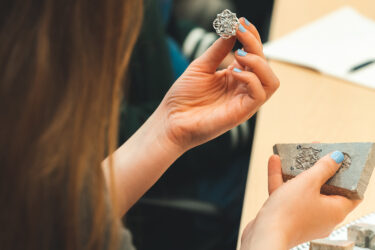
Image credit: Andrew Brodhead

Image credit: Andrew Brodhead
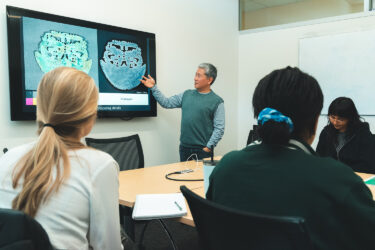
Image credit: Andrew Brodhead

Image credit: Andrew Brodhead
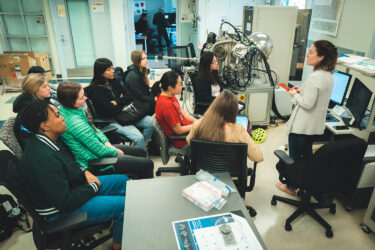
Image credit: Andrew Brodhead

Image credit: Andrew Brodhead
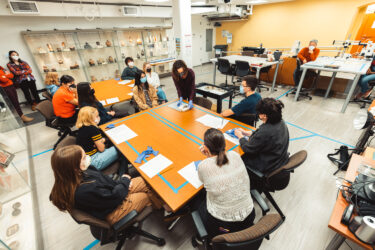
Image credit: Andrew Brodhead
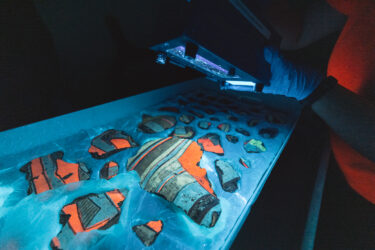
Image credit: Andrew Brodhead
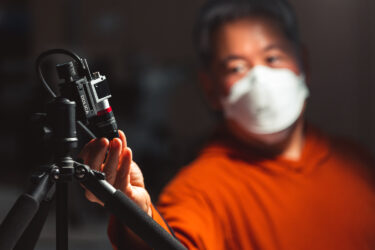
Image credit: Andrew Brodhead
Guest lecturers in the course discussed careers in art conservation – a typical day at work, the methods they often use – but also the code of ethics that applies to the work. This ethical framework is crucial because the students are asked to contemplate the lines between studying a piece, conserving it, and altering it as they design and/or perform scientific studies focused on artifacts from the FAMSF and SUAC collections. Stanford student and faculty involvement in conservation projects at FAMSF and SUAC can play a key role in facilitating access to advanced instruments within SNSF that these projects need.
“Given the lack of conservation science departments in San Francisco Bay Area museums – which our peer institutions in other major cities have – building partnerships with Stanford and its scientists, and inspiring teachers like Professor Mabuchi, is helping to bridge that gap,” said Williams.
Beauty in observation
For these experiments, students become acquainted with SNSF, where they can use equipment such as a Scanning Electron Microscope (SEM) and micro-Raman spectrometer. Operation of the SEM requires hours of individual training, given by Juliet Jamtgaard, who co-manages the Scanning Electron Microscope and Focused Ion Beam facilities at SNSF.
“Education is part of the mission of SNSF, and Applied Physics 189 gives me a great opportunity to introduce our facility and instruments to a new audience of students who may never have envisioned themselves in a science career,” said Jamtgaard. “I also love to show the students how much fun it can be to use a scanning electron microscope, for example, and perhaps that experience will spark an interest in the sciences.”
All the components of the course work to soften what can often be seen as a hard line between art and science. The aim is not to convert artists to scientists but to show students how these disciplines can be inextricably linked, and how they can enhance each other.
“I did about four hours of training with Juliet with this pristine, powerful machine. I was looking at zoomed-in images of graphite and seeing the structures … it was beautiful,” said Kong. “I didn’t think that science could be beautiful. Art is about beauty, and science is about truth and knowledge. But then I saw they’re not really that different because they’re both about looking at something and being very observant.”
To read all stories about Stanford science, subscribe to the biweekly Stanford Science Digest.